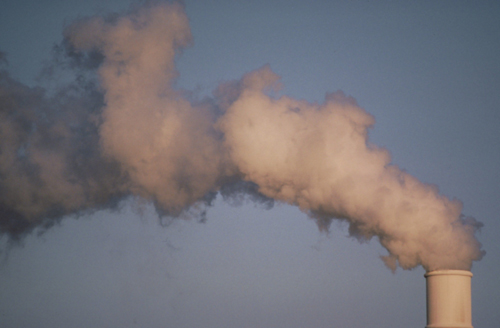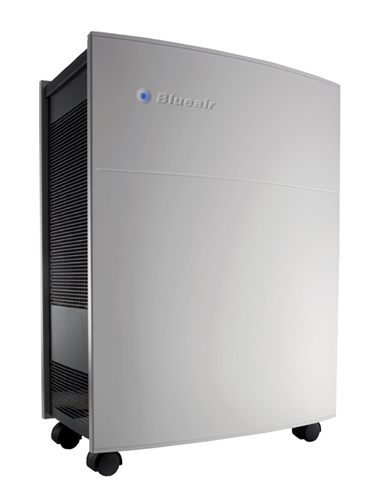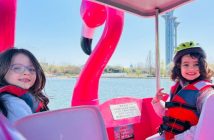
It’s no secret that Beijing is plagued by frequent smog, which can block visibility and make it hard to breathe. The air quality index (AQI) in the capital has in recent years exploded to unprecedented heights, leading international news media to dub the phenomenon “airpocalypse.” Relocating here invariably means staying up-to-date on air pollution, and taking measures to prevent or manage respiratory diseases.
Air pollution consists of natural and man-made substances suspended in the air that we breathe, such as the fine particles produced by burning fossil fuels like coal and petroleum, ground-level ozone (a reactive form of oxygen that is a primary component of smog), and noxious gases such as sulfur dioxide, nitrogen oxides, carbon monoxide and chemical vapors.
According to the US government’s AirNow website, the minuscule suspended substances called particular matter (PM) can cause various health issues when inhaled, including “coughing, wheezing, reduced lung function, asthma attacks, heart attacks and strokes” as well as “early death.” While the larger PM are usually filtered through the nose and trachea, PM 2.5 (particles measuring 2.5 micrometers in diameter) can enter the bloodstream and cause cardiovascular complications.
These particles can damage the respiratory system, lowering its resistance to infection and making it easier to contract respiratory diseases like sinusitis, bronchitis, and pneumonia. Prolonged exposure to air pollution can also cause delayed lung development in children.
Checking the AQI
Get into the habit of regularly checking the AQI. This can help families make decisions about whether they should limit exposure to the outdoors, or use protective measures such as anti-pollution masks and air purifiers.
There are websites and apps that residents can check before leaving the house. The most often-quoted source of AQI readings is the US Embassy’s Twitter feed (@BeijingAir), which publishes results from a monitoring station near the embassy in Liangmaqiao. The results might differ with other areas like Shunyi, which is located further outside the city.
From 27 different monitoring stations around the capital, the Beijing Municipal Environmental Monitoring Center also publishes readings on www.zx.bjmemc.com.cn that tend to differ slightly from the US Embassy readings.
The most comprehensive app is the China Air Quality Index by Fresh-Ideas Studio available for iOS and Android systems. This free app gathers readings from 225 cities across China, so it’s also handy for traveling. It gathers AQI readings from the US Embassy and the local government, as well as a map of the monitoring sites around Beijing. The app also offers unique readings on different pollutants such as PM2.5, PM10, carbon monoxide, sulfur dioxide, and nitrogen dioxide.
Air pollution is of particular concern for families, as children and the elderly are more susceptible to respiratory diseases. Dr. Ruihong Yang, a pulmonologist from Hong Kong International Medical Clinic (HKIMC) in Beijing, shares insight on two common respiratory conditions: asthma and chronic obstructive pulmonary diseases (COPA). Both of these can be caused or exacerbated by air pollution. She talks about how to manage the diseases as well as preventive measures that all Beijing residents can take.
Respiratory Diseases
Respiratory diseases affect the respiratory system, including the nose, throat, trachea, bronchi, lungs, and pleurae (the two membranes that protect the lungs). Symptoms include fever, sneezing, sore throat, cough, phlegm, shortness of breath, and chest pains. Respiratory diseases can be caused by viral or bacterial infections, allergies, physical and chemical damage (such as from air pollution), and hereditary factors. Since they tend to share similar symptoms, a visit to the doctor is essential for diagnosis.
Asthma is caused by the narrowing of airways that swell and produce extra mucus, which makes breathing difficult. Asthma cannot be cured, but its symptoms can be managed; these include repeated episodes of wheezing, breathlessness, chest tightness, and coughing (early morning or nighttime).
The severity of asthma ranges from mild to life-threatening.
Dr. Yang says that routine blood tests, pulmonary function tests, initial allergy screening tests such as serum immunoglobulin E (IGE), and chest X-rays are used to determine the seriousness of the disease.
Asthma patients are normally prescribed a long-term bronchial dilator that can be bought at hospital pharmacies and a leukotriene receptor antagonist (which inhibits fatty compounds from inflaming and constricting the airways) such as Montelukast. Dr. Yang advises asthmatics to carry a Ventolin inhaler, which they must inhale immediately in case of an attack, then go see their doctor.
Chronic obstructive pulmonary disease (COPD) actually refers to a group of diseases that block air flow and make breathing difficult. The two most common are emphysema and chronic bronchitis. Emphysema occurs when the air sacs (alveoli) at the end of the smallest air passages (bronchioles) in the lungs are gradually destroyed. Chronic bronchitis is an inflammation of the lining of the bronchial tubes, which carry air to and from the lungs.
COPD cause irreversible damage to the lungs and, like asthma, their treatment focuses on symptom management. Emphysema requires routine blood tests, pulmonary function tests, chest X-rays, and chest CT scans. For bronchitis, routine blood tests, C-reactive protein tests, chest X-rays, and a tuberculosis skin test (also known as PPD are required.
Dr. Yang says, “The main therapy for bronchitis is antitussive cough medicine, suppressants or expectorants. Antibiotics are needed when the patient is infected by bacterium. For COPD patients, the curative measures including long-term bronchial dilators and inhaled steroids. As exacerbation occurs, antibiotics are often necessary.”
Dr. Yang says that families can prevent and manage respiratory diseases in Beijing by taking preventative measures such as using anti-pollution masks and air purifiers.
Tackling the Outdoors
There are numerous brands of masks in the market. The most effective ones include a filter that can block out at least 99 percent of PM2.5 particles. That being said, Family Physician and beijingkids Columnist Dr. Richard St Cyr states that the masks are useless unless worn properly; they should fit snugly over the face to prevent leakage.
In March, the China Consumers’ Association released a report grading 37 masks on filtration effectiveness, exhalation (how efficiently the mask expels exhaled air), and leakage. Some popular models like Vogmask and Respro weren’t included in the study, but Totobobo brand was. The US-made 3M N95 disposable mask scored a full five out of five stars for both filtration and leakage.
Here is a breakdown of the following masks: Vogmask, Totobobo, 3M N95 and Respro.

Vogmask
This is one of the more popular brands within the expat community, offering both child-sized and adult-sized masks (pictured below). A newer player in the industry, Vogmask produces comfortable HEPA-filtered cotton and non-woven microfiber masks for children age 1 and up. Due to high demand, however, children’s sizes are often sold out.
Vogmasks cost RMB 180-225 on the brand’s online store (www.vogmask.cn) with an additional RMB 20 shipping charge for orders of three masks and less. Vogmasks can also be bought at Torana Clean Air Center and on Taobao.
Totobobo
Originally from Singapore, this reusable mask is made from a lightweight transparent material called SoftTech with replaceable filters. The company has two models, one that cover the nose and mouth (Classic) and one that covers the mouth only (SuperCool). They have different levels of filtration ranging from 92 percent to 96 percent effectiveness.
Depending on the model, straps can go over the wearer’s ears or head. Parents can trim the mask along the dotted lines to fit children 5 and over. In the March CCA report, Totobobo was found to have 3.5 out of 5 stars for filtration and 4 of 5 stars for breathing resistance (how easy it was to breathe), but did not get a smiley face for leakage. The main drawback is that the mask tends to form condensation when the wearer exercises or cycles, which can become quite uncomfortable. However, it’s relatively inexpensive and can be cut down to fit a child.
The Classic costs RMB 195, the SuperCool costs RMB 202, and replacement filters cost RMB 249 for a box of ten pairs from I Just Wanna Buy and Torana Clean Air Center.
3M N95 Masks
Dr. Yang says that the US-based 3M N95 disposable masks (models 8210, 9010, 9005 and 9332) are good masks to start with. The US-based 3M company supplies protective gear for construction and heavy duty industries. These masks are the benchmark of quality after years of vigorous testing.
In the CCA report, three 3M masks were tested and scored 5 out of 5 stars for filtration efficiency and breathing resistance, as well as a smiley face for leakage. The masks are comfortable, but there are only over-the-head straps and no over-the-ear option.
The 9332 model includes a valve to make breathing easier. However, these masks have to be disposed of after a few days, as most of them tend to become grey very quickly from trapped particles. There is one child model, the 1860S that can only be found on Taobao for RMB 1-15 depending on the seller.
The mask can be bought at selected supermarkets, convenience stores like 7 Eleven. Online e-commerce sites such as Taobao, I Just Wanna Buy, Airbusters, and Amazon China.
Respro
This company was established in 1993 in the UK for use by cyclists and outdoor sports lovers. Models available in Beijing include Techno, Sportsta, and Allergy. The Allergy mask is good for people who are prone to hay fever, asthma, or other respiratory diseases.
Respro masks combine two filters: Dynamic Activated Charcoal (DACC) and HEPA. They feature two valves to improve airflow when exhaling and reduce trapping of heat around the wearer’s face. The masks also have Velcro fastening for a snug fit and neoprene for durability and ease of care. This mask’s filters have to be changed regularly for maximum efficiency. Respro does not have children’s sizes available; masks only come in medium and large sizes.
Respro masks can be bought on e-commerce sites such as Taobao prices differs depending on seller, Natooke (a fixed-gear bike shop), and I Just Wanna Buy. The latter sells them for RMB 349 (Techno), RMB 389 (Sportsta), RMB 359 (Allergy), and RMB 220 (Techno filter two-pack).

Taking the Battle Indoors
On heavily polluted days, most expat families stay indoors to minimize damage, but ironically indoor air quality can be as bad – or worse – than outdoors. Without proper ventilation and filtration, various pollutants can build up in houses and apartments.
To pick out the most suitable air purifier for your home, companies such as Pure Living and Torana Clean Air can come to your home and test for mold, air and water quality, lead, and other pollutants. Pure Living does not recommend any air purifier brand, but Torana recommends Blue Air and Alen Air purifiers since they’re sold in-store. The “big three” companies – IQAir, Blue Air and Alen Air – can also perform free air assessments, which involves measuring the PM levels in your house using a particulate scanner and repeating the task after turning an air purifier on for a few minutes.

Filtration efficacy is the most important factor when considering air purifiers. Some, like the guys behind Smart Air, claim that you can make an efficient air purifier for around RMB 200 by strapping a HEPA filter to a fan. Others, like IQAir, Blue Air, and Alen Air, can cost upwards of RMB 10,000 per unit.
Second-hand air purifiers are also an option, as long as there are no mechanical issues and the filter is changed often. Ads for second-hand air purifiers can often be found on forums like Beijing Café and Beijing Mamas.
Windows must be closed while air purifiers are on and they should be run at the highest setting on polluted days to be effective. In addition, the filter must be changed frequently. Many manufacturers recommend every three months, but you’ll probably need to do it more frequently in a city as heavily polluted as Beijing.
In addition, Dr. Yang recommends taking extra precautions such as keeping away from people infected with colds or flus, frequently washing your hands, avoiding touching your nose or mouth, and getting the influenza vaccination every year.
Resources
Hong Kong International Medical Clinic (HKIMC) 北京港澳国际医务诊所
Daily 9am-9pm. 9/F, Office Tower, Hong Kong Macau Center Swissotel, 2 Chaoyangmen Beidajie, Dongcheng District (6502 3426) www.hkclinic.com 朝阳门北大街2号港澳中心办公楼9层
Torana Clean Air Centers
1) Daily 10am-8.30pm. Unit LB09, 1/F, Europlaza Mall, Shunyi District (8459 0785) www.toranacleanair.com 顺义区天竺镇裕翔路99号欧陆广场LB09; 2) Daily 10am-9pm. 1/F, Sanlitun SOHO, Gongti Beilu, Chaoyang District (8590 0511) 朝阳区工体北路三里屯SOHO首层; 3) Daily 10.30am-7pm. Central Park, Chaoyang District (8459 0785) 朝阳区新城国际
My Health Beijing
Dr. Richard Saint Cyr’s blog, where he frequently reviews air purifiers and masks. www.healthbeijing.com
Totobobo
www.totobobo.com
Vogmask
www.vogmask.cn
I Just Wanna Buy
www.ijustwannabuy.com
Pure Living
www.purelivingchina.com
This article originally appeared on page 12-15 of the beijingkids Health Guide 2014. To get your free copy, email distribution@truerun.com or view it online at Issuu.
Photos courtesy of Wikimedia Commons, Vogmask, Healthpro Swiss and BlueAir.



